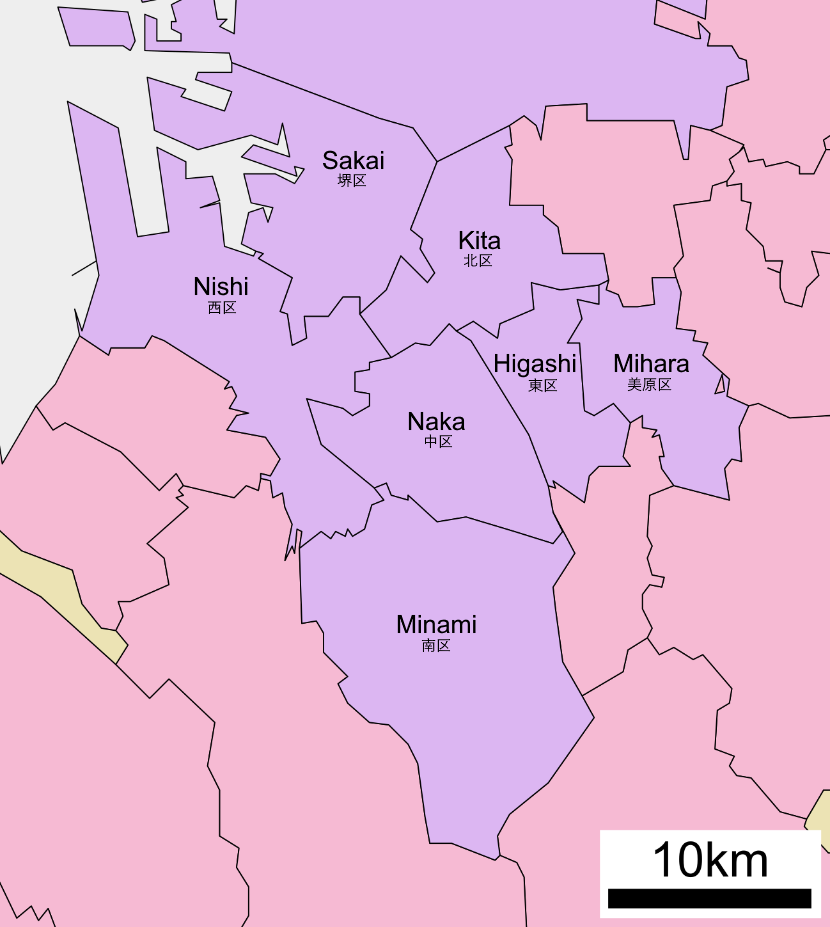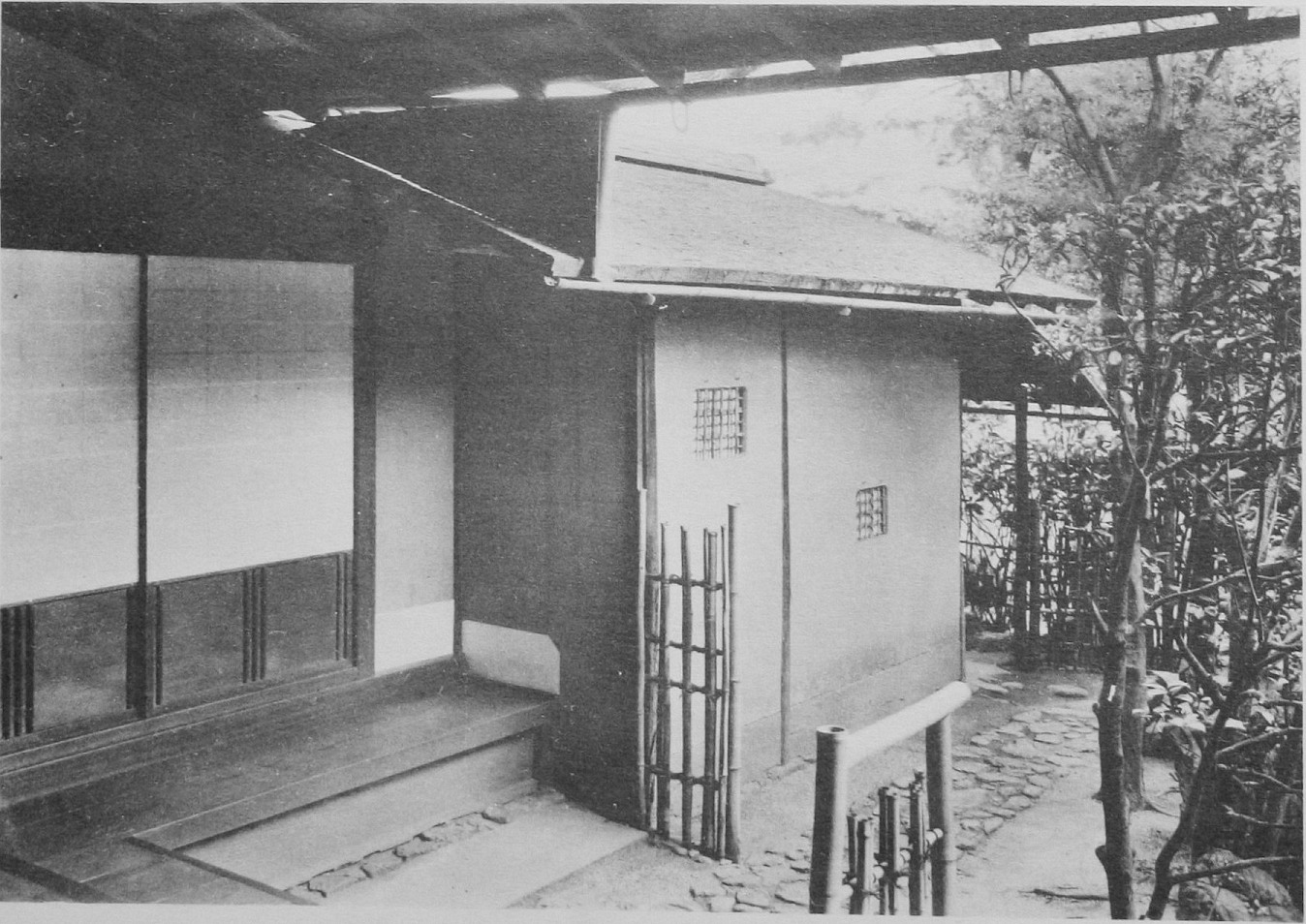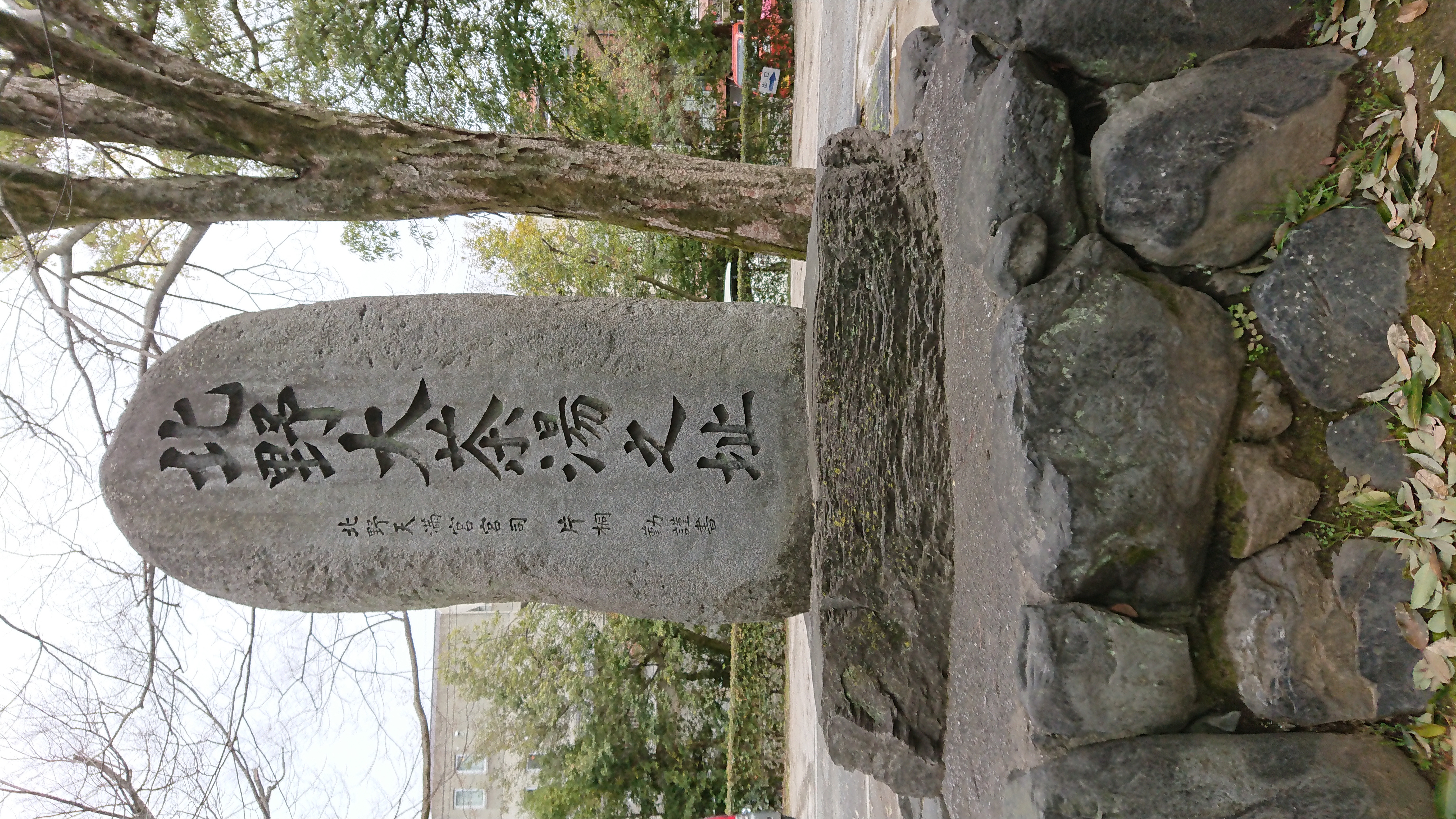|
Tsuda Sōgyū
was a Japanese tea master. Biography Tsuda Sōgyū belonged to the influential family of merchants of Sakai whose business name was Tennōjiya. Together with his father, Tsuda Sōtatsu, he built the Tennōjiya into one of the most prosperous business houses in Sakai. A political tactic he used to accomplish this was by winning the favor of Oda Nobunaga, who was on the path to hegemony. Around the year 1574, he became one of the three merchant-class tea masters of Sakai to be in charge of ''chanoyu'' (Japanese tea ceremony) affairs for Nobunaga; a position referred to as ''chatō'' ("tea head"). The other two were Imai Sōkyū and Sen no Rikyū. Sōgyū was very familiar with Akechi Mitsuhide, so after Nobunaga was killed by the hands of Mitsuhide during the year of 1582, Sōgyū's reputation was wounded. Even though this was true, Nobunaga's avenger and political successor, Toyotomi Hideyoshi, had all three of Nobunaga's ''chatō'', including Sōgyū, serve him as his own me ... [...More Info...] [...Related Items...] OR: [Wikipedia] [Google] [Baidu] |
Sakai, Osaka
is a city located in Osaka Prefecture, Japan. It has been one of the largest and most important seaports of Japan since the medieval era. Sakai is known for its keyhole-shaped burial mounds, or kofun, which date from the fifth century and include Daisen Kofun, the largest grave in the world by area. Once known for swords, Sakai is now famous for the quality of its cutlery. , the city had an estimated population of 819,965, making it the fourteenth most populous city in Japan (excluding Tokyo). Geography Sakai is located in southern Osaka Prefecture, on the edge of Osaka Bay and directly south of the city of Osaka. Neighboring municipalities Osaka Prefecture *Osaka * Matsubara *Habikino *Ōsakasayama *Kawachinagano * Izumi * Takaishi Climate Sakai has a Humid subtropical climate (Köppen ''Cfa'') characterized by warm summers and cool winters with light to no snowfall. The average annual temperature in Sakai is . The average annual rainfall is with June as the wettest month ... [...More Info...] [...Related Items...] OR: [Wikipedia] [Google] [Baidu] |
Oda Nobunaga
was a Japanese ''daimyō'' and one of the leading figures of the Sengoku period. He is regarded as the first "Great Unifier" of Japan. Nobunaga was head of the very powerful Oda clan, and launched a war against other ''daimyō'' to unify Japan in the 1560s. Nobunaga emerged as the most powerful ''daimyō'', overthrowing the nominally ruling shogun Ashikaga Yoshiaki and dissolving the Ashikaga Shogunate in 1573. He conquered most of Honshu island by 1580, and defeated the ''Ikkō-ikki'' rebels in the 1580s. Nobunaga's rule was noted for innovative military tactics, fostering of free trade, reforms of Japan's civil government, and the start of the Momoyama historical art period, but also for the brutal suppression of those who refused to cooperate or yield to his demands. Nobunaga was killed in the Honnō-ji Incident in 1582, when his retainer Akechi Mitsuhide ambushed him in Kyoto and forced him to commit . Nobunaga was succeeded by Toyotomi Hideyoshi, who along with Toku ... [...More Info...] [...Related Items...] OR: [Wikipedia] [Google] [Baidu] |
Japanese Tea Ceremony
The Japanese tea ceremony (known as or ) is a Japanese cultural activity involving the ceremonial preparation and presentation of , powdered green tea, the procedure of which is called . While in the West it is known as "tea ceremony", it is seldom ceremonial in practice. Most often tea is served to family, friends, and associates; religious and ceremonial connotations are overstated in western spaces. While in the West it is known as a form of tea ceremony, in Japan the art and philosophy of tea can be more accurately described as "Teaism" as opposed to focusing on the ceremonial aspect. Zen Buddhism was a primary influence in the development of the culture of Japanese tea. Much less commonly, Japanese tea practice uses leaf tea, primarily , a practice known as . Tea gatherings are classified as either an informal tea gathering () or a formal tea gathering (). A is a relatively simple course of hospitality that includes confections, thin tea, and perhaps a light meal. A is a ... [...More Info...] [...Related Items...] OR: [Wikipedia] [Google] [Baidu] |
Imai Sōkyū
was a 16th century merchant in the Japanese port town of Sakai, and a master of the tea ceremony. His ''yagō'' was Naya. Biography A relative of the Amago and Sasaki samurai clans, Sōkyū originally came from Yamato Province. After settling in Sakai, he studied the tea ceremony under Takeno Jōō, eventually marrying Jōō's daughter and inheriting his teawares and lineage as a tea master. In his business, Sōkyū traded primarily in firearms and ammunition. Around 1554, after donating a large sum to the Daitoku-ji, he organized a shake-up in the local merchant circles by which he climbed into a position of considerable influence, and became a member of the city's leadership council. He traveled to the capital in 1568, where he met with warlord Oda Nobunaga, and presented him with some tea accoutrements which had belonged to earlier masters. He thus earned Nobunaga's favor, and was granted a noble title. Shortly afterwards, when Nobunaga sought to lay claim to Sakai, many ... [...More Info...] [...Related Items...] OR: [Wikipedia] [Google] [Baidu] |
Sen No Rikyū
, also known simply as Rikyū, is considered the historical figure with the most profound influence on ''chanoyu,'' the Japanese "Way of Tea", particularly the tradition of '' wabi-cha''. He was also the first to emphasize several key aspects of the ceremony, including rustic simplicity, directness of approach and honesty of self. Originating from the Sengoku period and the Azuchi–Momoyama period, these aspects of the tea ceremony persist. Rikyū is known by many names; for consistency, he will be referred to as Rikyū in this article. There are three ''iemoto'' (''sōke''), or 'head houses' of the Japanese Way of Tea, that are directly descended from Rikyū: the Omotesenke, Urasenke, and Mushakōjisenke, all three of which are dedicated to passing forward the teachings of their mutual family founder, Rikyū. Early life Rikyū was born in Sakai in present-day Osaka Prefecture. His father was a warehouse owner named , who later in life also used the family name Sen, and his ... [...More Info...] [...Related Items...] OR: [Wikipedia] [Google] [Baidu] |
Akechi Mitsuhide
, first called Jūbei from his clan and later from his title, was a Japanese ''samurai'' general of the Sengoku period best known as the assassin of Oda Nobunaga. Mitsuhide was a bodyguard of Ashikaga Yoshiaki and later a successful general under ''daimyō'' Nobunaga during his war of political unification in Japan. Mitsuhide rebelled against Nobunaga for unknown reasons in the Honnō-ji Incident in 1582, forcing the unprotected Nobunaga to commit ''seppuku'' in Kyoto. Mitsuhide attempted to establish himself as ''shōgun'', but was pursued by Nobunaga's successor Toyotomi Hideyoshi and defeated at the Battle of Yamazaki. The 13-days short reign of Mitsuhide is listed as the inspiration for the yojijukugo set phrase . He is still popular in present culture. A ceremonial activity was held on April 15, 2018, in Kyoto. Early life Akechi Mitsuhide was believed to be born on 10 March 1528 in Tara Castle, Mino Province (present-day Kani, Gifu Prefecture) Mitsuhide was a descendan ... [...More Info...] [...Related Items...] OR: [Wikipedia] [Google] [Baidu] |
Toyotomi Hideyoshi
, otherwise known as and , was a Japanese samurai and ''daimyō'' (feudal lord) of the late Sengoku period regarded as the second "Great Unifier" of Japan.Richard Holmes, The World Atlas of Warfare: Military Innovations that Changed the Course of History, Viking Press 1988. p. 68. Hideyoshi rose from a peasant background as a Affinity (medieval), retainer of the prominent lord Oda Nobunaga to become one of the most powerful men in Japan. Hideyoshi succeeded Nobunaga after the Honnō-ji Incident in 1582 and continued Nobunaga's campaign to unite Japan that led to the closing of the Sengoku period. Hideyoshi became the ''de facto'' leader of Japan and acquired the prestigious positions of Daijō-daijin, Chancellor of the Realm and Sesshō and Kampaku, Imperial Regent by the mid-1580s. Hideyoshi launched the Japanese invasions of Korea (1592–1598), Japanese invasions of Korea in 1592 to initial success, but eventual military stalemate damaged his prestige before his death in 1 ... [...More Info...] [...Related Items...] OR: [Wikipedia] [Google] [Baidu] |
Grand Kitano Tea Ceremony
The Grand Kitano Tea Ceremony (Japanese: 北野大茶湯; ''Kitano ōchanoyu''), also known in English as the Grand Kitano Tea Gathering, was a large Japanese tea ceremony event that was hosted by the regent and chancellor Toyotomi Hideyoshi at Kitano Tenmangū shrine in Kyoto on the first day of the tenth month in the year Tenshō 15 (1587). Japanese cultural historians view it as a major cultural event of the Momoyama period. Louise Cort points out these three reasons: The event was "a key move in Hideyoshi's strategy to prove his cultural legitimacy; a turning point in the development of chanoyu style and theory; and a crisis in the personal relationship between its chief designers, two of the most influential figures of the Momoyama period, Hideyoshi and Sen no Rikyū". Background Toyotomi Hideyoshi, a warrior of humble background who rose to eventually become the national ruler, recognized cultural knowledge to be as important an attribute of leadership as military might a ... [...More Info...] [...Related Items...] OR: [Wikipedia] [Google] [Baidu] |
1591 Deaths
Events January–June * March 13 – Battle of Tondibi: In Mali, forces sent by the Saadi dynasty ruler of Morocco, Ahmad al-Mansur, and led by Judar Pasha, defeat the fractured Songhai Empire, despite being outnumbered by at least five to one. * April 10 – English merchant James Lancaster sets off on a voyage to the East Indies. * April 21 – Japanese tea-master Sen no Rikyū commits seppuku, on the order of Toyotomi Hideyoshi. * May 15 – In Russia, Tsarevich Dimitri, son of Ivan the Terrible, is found dead in mysterious circumstances, at the palace in Uglich. The official explanation is that he has cut his own throat during an epileptic seizure. Many believe he has been murdered by his rival, Boris Godunov, who becomes tsar. * May 24 – Sir John Norreys, with an expeditionary force sent by Queen Elizabeth I of England, takes the town of Guingamp after a brief siege, on behalf of Henry of Navarre. * May 30 – Timbuktu is captured by ... [...More Info...] [...Related Items...] OR: [Wikipedia] [Google] [Baidu] |
Japanese Tea Masters
Japanese may refer to: * Something from or related to Japan, an island country in East Asia * Japanese language, spoken mainly in Japan * Japanese people, the ethnic group that identifies with Japan through ancestry or culture ** Japanese diaspora, Japanese emigrants and their descendants around the world * Japanese citizens, nationals of Japan under Japanese nationality law ** Foreign-born Japanese, naturalized citizens of Japan * Japanese writing system, consisting of kanji and kana * Japanese cuisine, the food and food culture of Japan See also * List of Japanese people * * Japonica (other) * Japonicum * Japonicus * Japanese studies {{disambiguation Language and nationality disambiguation pages ... [...More Info...] [...Related Items...] OR: [Wikipedia] [Google] [Baidu] |





.jpg)